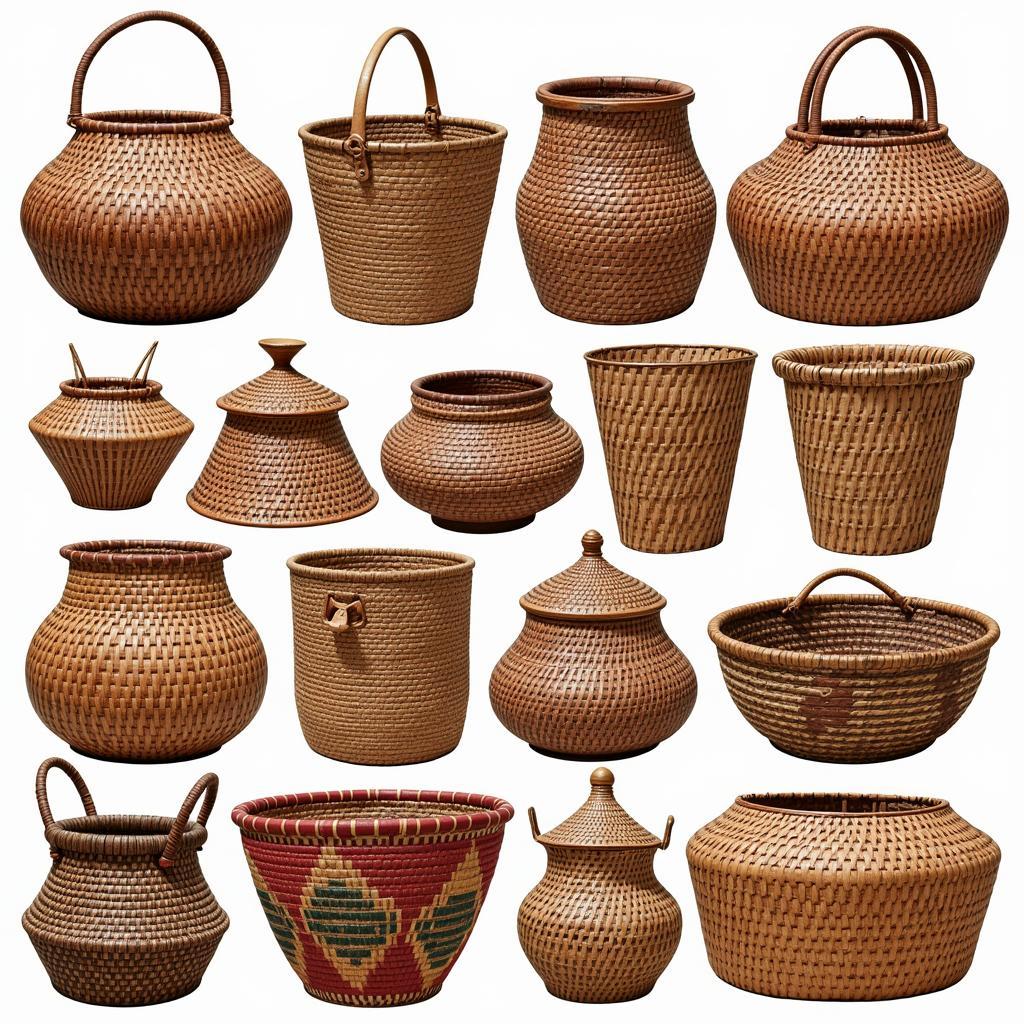Unveiling the Beauty of African Jade Beads
African Jade Beads, with their vibrant green hues and smooth textures, have captivated people for centuries. From ancient adornments to modern jewelry, these beads carry a rich history and cultural significance, reflecting the diverse traditions of the African continent. This article delves into the fascinating world of African jade beads, exploring their origins, symbolism, and the artistry behind their creation.
The Origins and Significance of African Jade Beads
African jade, often referred to as “green chalcedony,” isn’t true jade (nephrite or jadeite) but a variety of microcrystalline quartz. Its rich green color, ranging from pale to deep emerald, is often attributed to the presence of chromium or nickel. Historically, these beads have been highly prized across various African cultures, symbolizing wealth, status, and spiritual connection. In some communities, they are believed to possess protective powers, warding off negative energy and promoting healing. They are also often used in traditional ceremonies and rituals, representing a link to ancestors and the spiritual realm.
The sourcing of African jade has historically been concentrated in specific regions. Deposits are found in countries like South Africa, Namibia, and Zimbabwe, where skilled artisans have crafted these beads for generations. The trade routes established for these beads played a vital role in connecting different communities and fostering cultural exchange across the continent.
The Artistry of African Jade Bead Making
Crafting African jade beads is a meticulous process passed down through generations. Traditionally, artisans use simple tools like hammers and chisels to shape the rough stones into beads. The process involves carefully chipping away at the stone, gradually refining its shape and creating the desired size. Then, they meticulously polish the beads to achieve a smooth, lustrous finish. This painstaking hand-crafted approach adds a unique touch to each bead, making them highly valued.
The skill and artistry involved in creating these beads are not limited to shaping and polishing. Many artisans incorporate intricate carvings and patterns into their designs, adding further layers of meaning and aesthetic appeal. Some beads feature geometric patterns, while others depict animals, plants, or abstract symbols. These designs often reflect the cultural heritage and artistic traditions of the specific community or region where the beads are made.
African Jade Beads in Modern Jewelry
Today, African jade beads continue to be cherished in contemporary jewelry designs. Their natural beauty and cultural significance make them a popular choice for both traditional and modern pieces. From simple necklaces and bracelets to elaborate earrings and pendants, these beads add a touch of elegance and cultural richness to any ensemble. The versatility of African jade allows it to be paired with various metals, such as silver, gold, and copper, creating unique and stunning pieces.
The increasing global interest in ethical and sustainable fashion has also contributed to the rising popularity of African jade beads. Many consumers appreciate the handcrafted nature of these beads and the stories they tell. By choosing jewelry made with African jade, they support local artisans and contribute to the preservation of traditional crafts. Furthermore, the unique variations in color and texture of each bead ensure that every piece of jewelry is truly one-of-a-kind.
Conclusion: The Enduring Allure of African Jade Beads
From their historical significance as symbols of wealth and status to their modern-day appeal in contemporary jewelry, African jade beads continue to fascinate and inspire. These vibrant green gems, shaped by skilled artisans and imbued with cultural meaning, represent a tangible connection to the rich heritage of the African continent. Choosing African jade beads means embracing a piece of history and supporting the artistry of talented craftspeople.
FAQ
-
What is African jade?
African jade is a type of green chalcedony, a microcrystalline quartz, not true jade. -
Where does African jade come from?
Primarily from Southern Africa, including countries like South Africa, Namibia, and Zimbabwe. -
What is the significance of African jade beads?
They symbolize wealth, status, spiritual connection, and sometimes protection. -
How are African jade beads made?
Traditionally handcrafted using tools like hammers and chisels, then polished. -
Why are African jade beads popular in modern jewelry?
For their natural beauty, cultural significance, and unique variations.
Common Scenarios and Questions
-
Scenario: A customer wants to know if their African jade beads are authentic.
-
Question: How can I tell if my African jade beads are real?
-
Scenario: A buyer is interested in the cultural meaning of the beads.
-
Question: What do African jade beads symbolize in different cultures?
-
Scenario: Someone is looking for information on cleaning and caring for their African jade jewelry.
-
Question: How do I clean and care for my African jade jewelry?
More to Explore
Check out our other articles on African gemstones and traditional jewelry making. Learn more about the diverse cultures of Africa and the unique artistry of its people.
When you need assistance please contact Phone Number: +255768904061, Email: kaka.mag@gmail.com Or visit us at: Mbarali DC Mawindi, Kangaga, Tanzania. We have a 24/7 customer support team.

